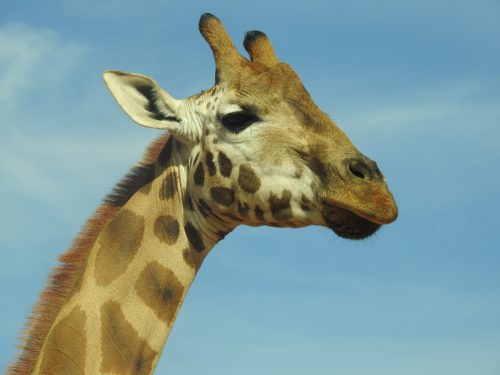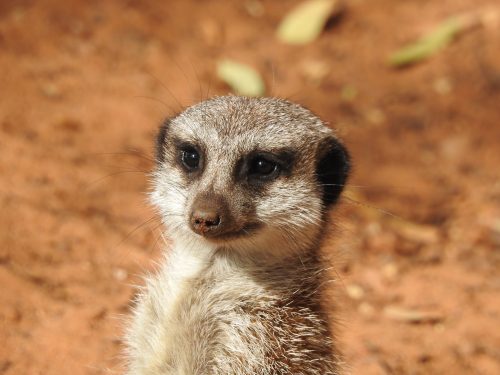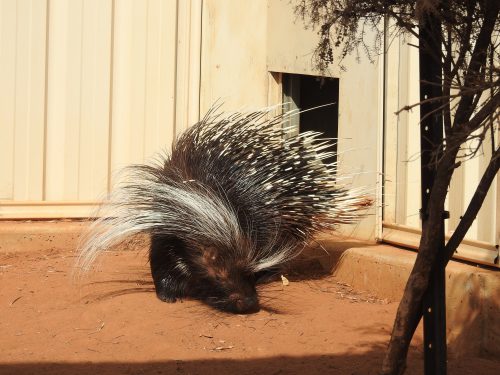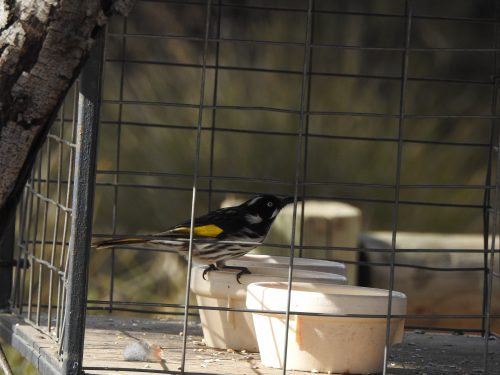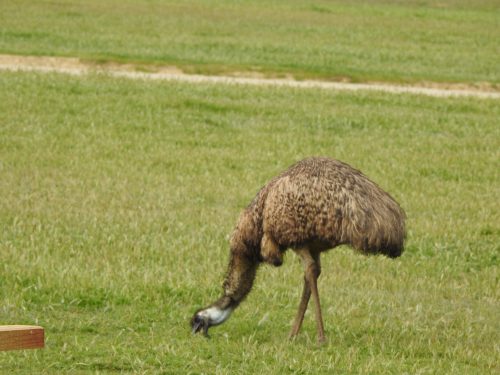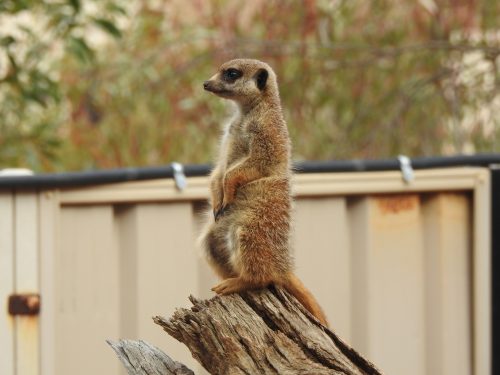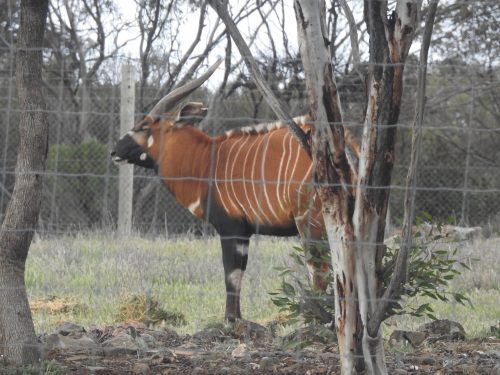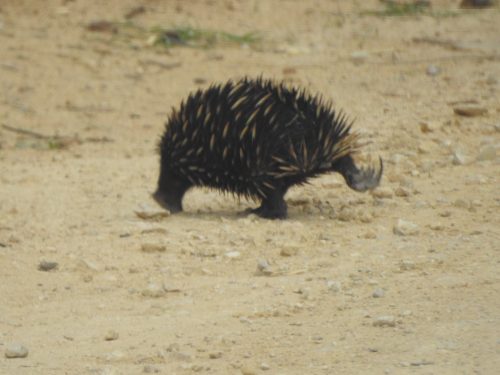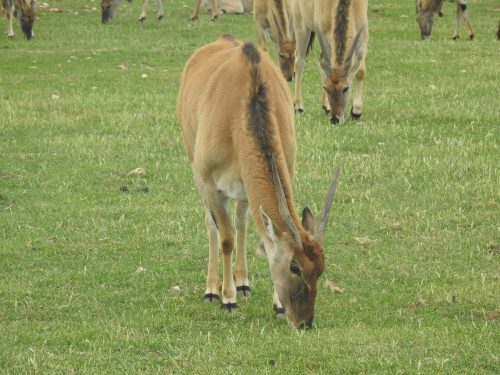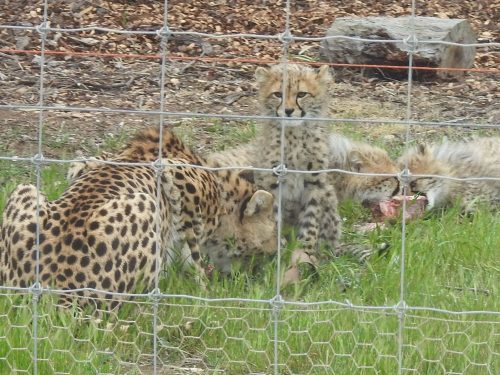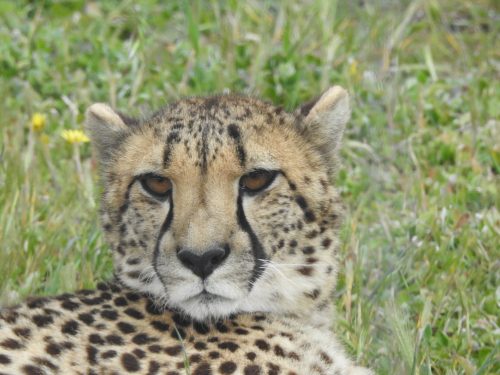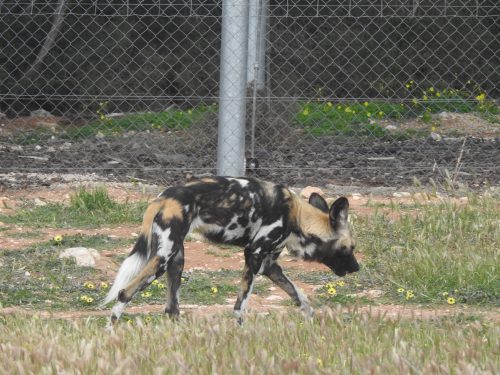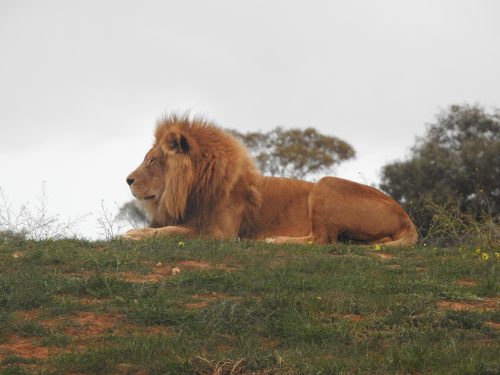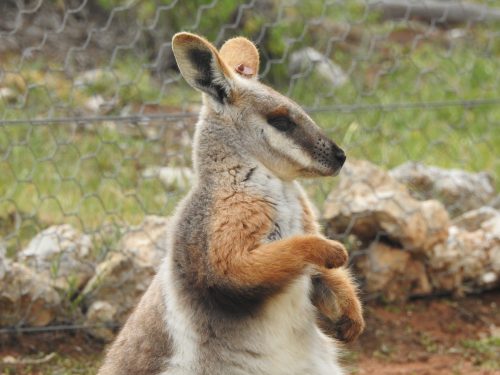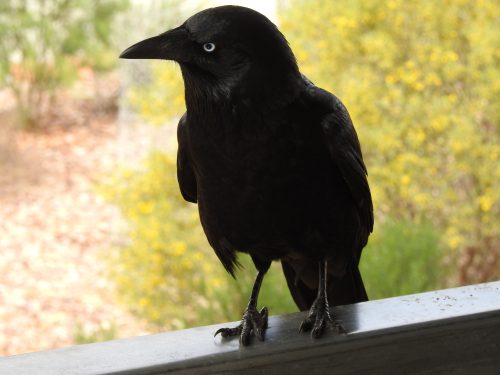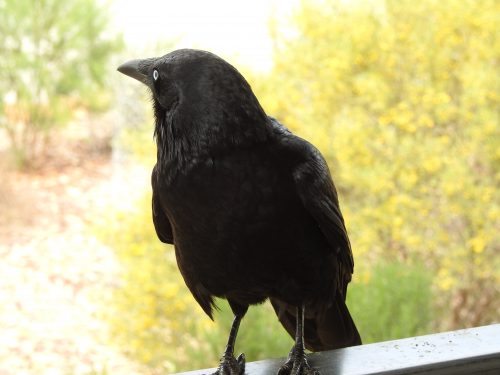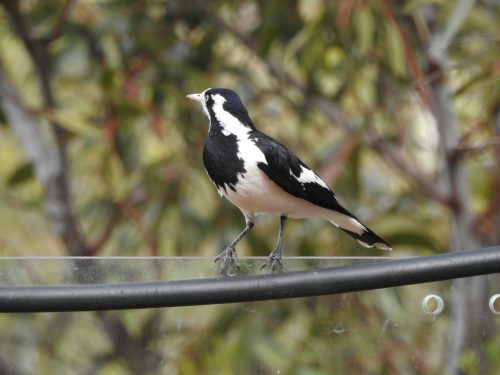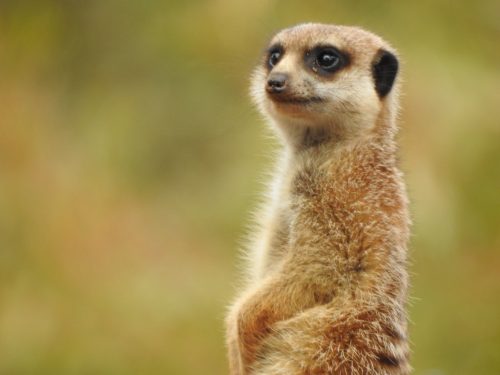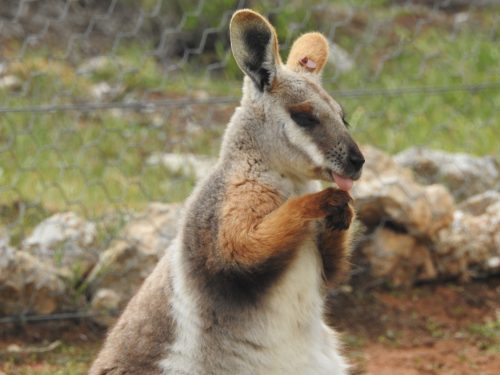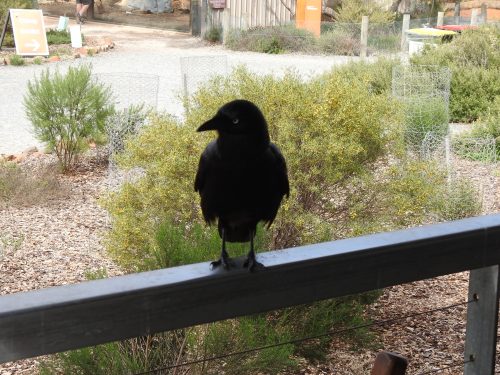Birds and animals of Monarto Zoo
Recently my friend Keith took me to Monarto Zoo. This open range zoo is about an hour’s drive south-east of Adelaide, South Australia and about ten minutes drive from my home. Over the years I have lived nearby I have been many times to this zoo which is a part of the larger Adelaide Zoo. My friend Keith is a volunteer guide at the zoo, so it was a different experience having my own personal guide for the day.
On arriving at the zoo we had a look at the Meerkats and African Crested Porcupine displays near to the visitor centre. I love the Meerkats because they frequently pose so nicely for photos. In reality, they are just acting naturally, usually one or more are sentries keeping their eyes on the lookout for any danger. Some of our larger raptors such as the various hawks and eagles found in this area would happily swoop down to catch a meal.
I was also delighted to get a good photo of the African Crested Porcupine. I hadn’t realised that the two porcupines on display were present in the zoo. They are a fairly recent addition to the collection and it has been a while since my last visit.
After a short wait, we caught the first bus tour of the zoo. There are two main ways of seeing the zoo; most people take a bus tour but quite a few alight from the bus at various points during the tour to walk to see various exhibits, or to walk the good walking trails throughout the zoo property. We chose to do part of the tour and then get off and walk one of the tracks leading back to the visitor centre where we had a delicious lunch. (I can recommend the salt and pepper squid – but there are many more items on the menu.)
Next to the Meerkat enclosure and near to the bus stop the keepers have several bird feeders. A quick snap of the New Holland Honeyeater (photo above) was all I could get before the bus arrived. It might be a good idea to spend some time here within camera range in order to get a variety of species visiting the feeders. Just as I was getting on the bus a small flock of about six or seven Weebills were busily feeding in a mallee tree; they were moving too quickly for a photo and were partly hidden by the foliage.
During the bus tour, I saw Australian Magpies feeding on the ground in the American Bison enclosure as well as a few Little Ravens. In the Giraffe enclosure, there were more magpies and several Masked Lapwings. Part of the way around the bus trip we got off the bus and then walked along the Ridge Track, one of the walking tracks through the zoo. This track took us close to the Black Rhino enclosure where I managed a few photos of a leucistic (white) Australian Magpie. I will write about that in another post.
As we approached the Chimpanzee complex I kept a good lookout for Superb Fairy-wrens which I had seen in the bushland nearby on a previous visit. Alas – no wrens today. After a lovely lunch from the zoo restaurant, we went on another walking trail. This was the Mallee Fowl Track and it takes walkers past a large aviary which has two captive Mallee Fowl in it. This part of South Australia still has a small population of this endangered bird and I have seen a few birds just south of the zoo. I also know of several nests in the region but I am not sure if they are still being used. Near the aviary, I tried to get photos of a male and female Red-capped Robin, but they were not cooperating. I guess that means a return visit soon.
Good birding,
Trevor
Further reading:
Animals of Monarto Zoo
Earlier this week I posted here on this site an article about a recent visit to Monarto Zoo in South Australia. This zoo is not much more than about 15 minutes drive from my home in Murray Bridge. It forms a part of the great collection of animals in the Adelaide Zoo. I am a member of both so I try to visit the zoos on a regular basis. On this last visit, I not only saw a nice list of native birds which inhabit this open range zoo but I also managed a few good photos of many of the animals which I have decided to share today in this post.
One of the features of Monarto Zoo is that it is an open-range zoo. All of the larger animals are in open paddocks through which visitors are taken on a guided bus tour. The zoo used to be a farm, but the fenced enclosures now keep in exotic and Australian animals, not sheep or cattle. Some large sections of the zoo are natural scrub, areas which were never cleared by the original farmer. Some species native to this region remain trapped inside the zoo, species such as grey kangaroos, emus and the echidna shown in the photo above. This little fellow smartly crossed the road while the tour bus was parked so that visitors could get off or on the bus. While the echidna is widespread in this region, in my experience one does not come across one very frequently, possibly because they are largely nocturnal. It was good to see that the species is alive and well in the confines of the zoo. From time to time I also have one come to visit my garden.
Over recent months there has been quite a number of baby animals born in Monarto Zoo, including the adorable Cheetah cubs shown in the photo above. I also managed a good portrait shot of the mother, shown below.
The magnificent male Lion shown in the photo above is actually sitting on top of a human enclosure. For an extra fee, visitors to the zoo can enter this ‘cage’ and experience the Lions up close – and visitors can feed the lions meat through the grill of the human cage. I haven’t yet taken advantage of this experience but I plan to do it sometime later this year. It should be awesome.
My last photo today is of one of the Yellow-footed Rock-wallaby. No guessing how it got its name. This species can be found in the more remote parts of South Australia such as the Flinders and Gawler Ranges. I have seen them in their natural environment but that was many years ago.
I hope that you enjoyed the photos. Please leave a comment about your encounters with any of these species.
Trevor
A Cheeky Raven at Monarto Zoo
A few weeks ago my daughter suggested that we visit the Monarto Zoo. It had been about a year since my last visit which is rather poor of me because it is only a ten-minute drive from my home in Murray Bridge, South Australia. And I am a member so I can enter whenever I please at no cost. Monarto Zoo is a part of the Adelaide Zoo which I also must visit again soon.
Before we went on the guided bus tour of the open range zoo we decided to buy our lunch from the cafe in the Visitor Centre. We found a suitable table overlooking the garden and before we had even started eating, one of the local Little Ravens came to join us. Just like many species of birds, this Raven had learned that people are often associated with food. It certainly was not shy and landed on the railing right next to our table. I could have reached out and touched it. I am not normally in favour of feeding our native birds, but my daughter has no such reservations. Nor did the Raven – it gratefully took the food handed out and flew off to a nearby mallee tree to consume the handout. It returned several times, both to our table and to the tables of other zoo visitors.
During our lunch, we were also visited by several Magpie-larks, another common species in this area. While they came close to our table, they never ventured as close as the Raven. I managed a good photo of the female while it was perched on the glass fence of the nearby Meerkat enclosure.
Monarto Zoo has a wonderful collection of the adorable Meerkats on display. With their enclosures having glass surrounds, everyone can get excellent views of these wonderful creatures. I have included a photo below. I have also included a photo of the beautiful Yellow-footed Rock-wallaby which is native to the Flinders Ranges in the northern parts of South Australia.
Emus at Monarto Zoo, South Australia
The Emu is arguably the most easily recognised birds in Australia, and I would guess that many non-Australians would also be able to identify one. It is our largest native bird and is flightless. It is found in most parts of mainland Australia but not in Tasmania. These days however its occurrence in built up areas is very limited, but it can still be common in grasslands, farming areas and national parks.
Last year on a visit to our local Monarto Zoo (just ten minutes’ drive away) I managed to photograph several cooperative Emus on the various walks we undertook. This was to fill a gap in my digital photo collection; for some reason I hadn’t taken any until then.
Further reading:
Waterbirds at Monarto Zoo, South Australia
Monarto Zoological Park is just a few minutes’ drive from my home in Murray Bridge. We try to visit several times a year because I have a membership card which allows free entry. One of the interesting things about this open range zoo is the waterhole in the giraffe enclosure. This is actually an artificial dam which fills during and after good rains. The creek which runs into this area is an ephemeral water course. When there is water, there is always a small collection of water birds attracted by the water.
On our visit late last year observed a few Grey Teal (see photo above) and some Black-winged Stilts (photo below). The Black-winged Stilts are found over most of Australia where there is suitable habitat, including swamps, lakes, shallow river edges, dams, salt-fields, estuaries and mudflats. Their nest is often made of weeds or other plant materials on the ground or raised up a little off the ground or can even be a plain depression on the ground with little or no lining.
Grey Teal are one of the most abundant and widespread of the waterfowl species in Australia. Their preferred habitat includes rivers, lakes, swamps, reservoirs, estuaries, waterholes and even small farm dams – in fact, where ever there is some water.
Not far from this waterhole I photographed a Masked Lapwing sitting on eggs right next to one of the tracks taken many times every day by the visitor buses. You can read about that and see a photo by clicking here.
